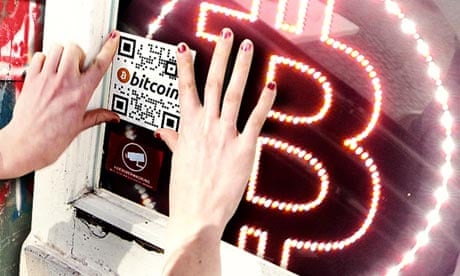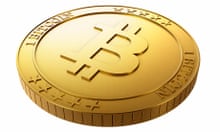Everyone in the cryptocurrency world has heard of Satoshi Nakamoto, the mysterious inventor of Bitcoin. But not many have heard of Peter Bushnell, the not-so-mysterious inventor of Feathercoin. On 20 April, he announced his alternative currency to a gaggle of online followers. Two months later, over 8m of them have been mined.
Feathercoin is one of a range of alternative currencies that, like Bitcoin, are based entirely on mathematics. Known collectively as alt-currencies, they have been launching in increasing numbers over the past year. Some launch for ideological reasons; others for technical ones; still more, for financial gain. Bitcoin is unlikely to be the only cryptocurrency to enjoy huge successes. So which altcoin will follow in its footsteps?
"I released this and wanted to foster a small community," says Bushnell, who quit his job in May as head of IT at Oxford University's Brasenose College. Since then, he has been living off his collection of Litecoins – another alt-currency, on which Feathercoin is based. When creating Feathercoin, he copied the Litecoin algorithm, but tweaked some technical parameters, including the total number of coins that could be mined.
"I wanted a currency with four times the amount of coins, and to recreate the enthusiasm that we had in the first place," he says.
Feathercoin is one fish in an increasingly large pond. Charles Lee, who launched Litecoin in 2011, also launched other currencies: his first, Fairbrix, was a clone of another, called Tenebrix. But there are many others: PPCoin, Freicoin, Namecoin, Terracoin, Devcoin, IxCoin and Novacoin, to name a few. Then there are Chinacoin, Rohalcoin, Franko, Worldcoin and YaCoin. Some currencies are variations of others. Some begin small, and then fire into life as more people support them. Others sputter and fail shortly after launch, languishing in the short, scribbled margins of cryptocurrency history.
Investors are always looking for the next big thing. What should they be looking for in alt-currencies if they want to try to pick winners? Or should they even bother, when Bitcoin has already captured the public's imagination?
"First, look at its hashing algorithm," says Kerry Fraser-Robinson, co-founder of a new company called MetalAir, which is launching a distributed cryptocoin exchange system.
Cryptocurrencies are mostly "mined". Computers "mine" for coins by competing to solve mathematical problems; all computers mining Bitcoins are connected together in a global network. Every 10 minutes, they compete to solve the same mathematical problem to earn a handful of Bitcoins. The clever part is that the mathematical problem is also designed to verify Bitcoin transactions made around the world.
Whenever anyone sends someone else some Bitcoins, the network logs the transaction. Roughly every 10 minutes, those transactions are bundled together into a single block. They are then run through a cryptographic function known as a hash, which produces a short alphanumeric string of numbers. That hash is like the electronic version of a wax seal applied to that block of transactions, closing the books on them and signing them off as valid.
Honour among miners
It's up to the miners to hash those numbers together, and they all work against each other to see who can do it first. Every time a miner successfully hashes a block of transactions, they get a reward, in the form of 25 Bitcoins.
The protocol is designed to produce a maximum of 21m Bitcoins, and 25 new coins are mined with each block, roughly every 10 minutes. But this hashing process is pretty easy – even your smartphone could do it in seconds. If everyone kept hashing transactions that quickly, all the Bitcoins would be mined in short order. So the Bitcoin network has to deliberately make it harder, by requiring each hash to have certain numerical properties.
Making a hash with those properties is a case of trial and error. The miners have to try to hash the transactions together lots of times, but each time with a different random number thrown in, to see if the resulting hash matches the requirements. The first one to crack it wins the Bitcoins. Then, that hash is added to a kind of general ledger known as the blockchain, and the whole thing starts over again.
A total of 11m Bitcoins have already been mined, but they're getting more difficult to find. People are solving this by throwing more computing power at the problem. They migrated from using their computer processors to using graphics cards (GPUs) because of their number-crunching capabilities. Bitcoin mining is generally measured in megahashes per second (Mh/sec). A Core i7 Macbook Pro with 8Gb RAM will generally deliver around 6-7 Mh/sec, according to statistics. An ATI Radeon 7870 graphics card will deliver 100 times that.
Now, companies are building specialised mining equipment using custom computer chips called ASICs (application-specific integrated circuits), designed to give the user a huge advantage in the race to solve the problems. ASICS are far more expensive than GPUs and CPUs, but they deliver mining capabilities into the Gigahash range (1 Gigahash is a thousand megahashes). Their use can be divisive, because those without them will find it far more difficult to mine Bitcoins.
That's partly why Charles Lee developed Litecoin. It has some key differences, he says: "Litecoin has faster transactions (2.5 minutes as opposed to 10), more coins (84m against 21m), and uses the Scrypt proof of work."
Unlike SHA-256, Scrypt is biased towards CPUs and GPUs, and against ASICs, making the mining process more egalitarian. This is because Scrypt is designed to rely on memory-intensive computing. CPUs and GPUs are designed to use lots of cheap RAM when available, whereas ASICs aren't – they function on pure mathematical speed. This could result in more people mining Litecoin in the coming months. ASICs built to mine Bitcoin can't mine anything else, but CPUs and GPUs are general purpose.
Litecoin developer Anton Yemelyanov predicts a mass migration. "It became clear that once the ASIC arrived, there would be a migration as all of the older GPU kit is retargeted towards Litecoin," he says.
It isn't just technical characteristics that improve an alt-currency's chance of success. "If you did a statistical analysis of lots of different features, it seems to be a development team that wants to stick around and is reliable," says Johnathan Turrall, Fraser-Robinson's co-founder at MetaLair. He points to Litecoin (with Feathercoin as a strong contender for the second Scrypt-based slot), along with PPCoin, and Freicoin, based on strong development teams that communicate with their communities.
Unique and yet plentiful
Both Freicoin and PPCoin have also experimented with different unique features. With only two proof-of-work algorithms available, it's a good way of further differentiating themselves. Freicoin imposes a "demurrage fee" of 4.9% on money held by users. It's effectively a negative interest rate, meaning that your money will fall in value if you don't spend it. For Freicoin, that's initially a problem, because for the time being, there are few if any places to spend it.
Frecoin's co-founder Mark Friedenbach, who recently quit his job at Nasa's Ames research centre, says that this is good for an economy, because it forces money to flow through the economy, going where it is needed and being put to good use. Such "liquidity" in an economy is always a good thing. "Those fees would drive people to use it as a medium of exchange only," he says. Users are encouraged to invest the money in the long term, and to keep it moving, rather than hoard it. "So, there's separation from wealth storage."
Freicoin's distribution system is also unique. The founders will allow 20% to be mined. The other 80% will be distributed via charitable grants, suggesting a strong sense of ideology and altruism.
Freicoin also launched well. How a coin launches is crucial, warns Fraser-Robinson. "That is all about whether there is any pre-mining going on. If there was, then people won't be interested in it," he says.
Pre-mining happens when someone uses computing power to mine their own collection of coins before they officially launch their currency to the world. It enables a coin developer to get in on the ground floor before anyone else has a chance to mine anything, and can lead to "pump-and-dump" scams where people pre-mine coins, launch their currency, and generate enough interest to inflate the value. Then they dump all their coins on the market by selling them to people in exchange for a more established cryptocurrency, or a fiat currency (dollars, pounds, or euros), thus deflating the market.
"There's a term for them in the community," says Freidenbach. "They call them 'scamcoins' because they're obviously there to commit fraud."
Watching the community's reaction to a coin is a good way to spot a coin with prospects, says Bushnell. "It's the people that rally around it. With a lot of the coins that come out, the only people in the community are those that pump and dump." When a coin is announced on popular forums such as Bitcointalk.org, it's worth seeing whether the people launching are new, or have a good, long-standing reputation with the community.
It's difficult to tell whether dying coins were scams or simply mismanaged launches, but regardless, pre-mining is relatively easy to spot, says Charles Hoskinson, founder of the Bitcoin Education Project, an educational initiative for cryptocurrency.
"It's generally hard to hide pre-mining because almost all cryptocurrencies have a global ledger," he says. Pre-mining generally leads to a loss of faith in the currency, and causes it to sputter out. There's one exception, though. "All the coins in the Ripple ecosystem are pre-mined by design."
Ripple effect
Launched by Chris Larsen, a long-time entrepreneur dealing in virtual credit, Ripple is both a currency and a payment system. Instead of using the mining method for coins, Ripple eliminated the mathematical problem. It simply pre-produced 100bn Ripples and noted them in a ledger. This is more efficient, says Larsen, not only because no electrical energy is used for mining, but because it's more egalitarian. "Today, to buy Bitcoin or a mined currency, you have to buy it or mine it. Mining is already impossible for the vast majority of people. It's in the hands of supercomputers," he says.
But it isn't entirely egalitarian yet, because his company, OpenCoin, still holds most of the Ripples. The founders created 100bn Ripples, and gifted some to OpenCoin, which in turn distributed a billion. It retains 79bn. "50bn-plus" will be given away in an as-yet unrevealed fashion, while 25bn will be used to fund the operations of the company.
The founders, who plan to make the Ripple network open source but haven't yet, could do very well if the currency gains traction. But its success depends on the success of the payment network, which is designed to support any currency, including Ripples, fiat currencies, and alt-currencies, with very low transaction fees.
Another parameter affecting the success of alt-currencies is security. There are many potential attacks on cryptocurrencies, many of which are particularly dangerous during the early stages. These include double spending attacks (when a false transaction supersedes a legitimate one), and network control (when one party gains control of a currency by owning most of the mining power). Ripple and others hope to solve these problems, but for alt-currencies in general, it's a constant worry.
So, there are technical and organisational characteristics that affect an alt-currency's chances of success. But there's another category: adoption.
"I think that's why Litecoin has been successful where other alt-coins have failed," argues Charles Lee. From this point on, it's all about how widely used and supported the coin is. If there's nowhere to use the coin, then the price will eventually go to zero." If you simply hoard an alt-currency and never use it, it becomes simply a vehicle for speculation as you trade it out for other alt-currencies or fiat currencies. To survive in the long term, it needs real-world traction. Merchants need to accept it. That's why all coins, from Bitcoin through to Freicoin and Ripple, face their next challenge: getting organisations to actually take payments in these coins, from retailers to pubs.
The moral for those wanting to invest in alt-currencies? As with any financial investment, do your research, understand that the markets (especially these ones) are often incredibly volatile – and for goodness' sake, don't invest more than you can afford to lose. Because while some of these alt-currencies show promise, many aren't worth the paper they're not printed on.
Market capitalisation: a guide to the coins
Predicting outcomes for alt-currencies is all well and good, but how can you measure their current success? Eli Dourado, a research fellow studying digital and network economics at George Mason University's Mercatus Center, looks at market value. That is, how many coins are out there, multiplied by a currency that they're paired with. "The whole point of it is to spend it so you want to look at how the market values it," he says.
All alt-currencies are pegged to Bitcoin, which can be exchanged with the US dollar. As expected, at the time of writing Bitcoin is way ahead with 11.32m of its own coins (equating to about $1.27bn).
According to alt-currency tracking site dustcoin.com, as of early Friday Litecoin's cap was around 515,551 Bitcoins (about $57.9m). After that, market capitalisations fall off dramatically. PPCoin is 23,106 (about $2.5m). Another, Namecoin, has a cap of 32,839 Bitcoins (about $3.6m), although this figure is confounded slightly because Namecoin shares its mining network with Bitcoin.
And Bushnell's Feathercoin? The entire mined network of Feathercoins is worth about 7,599 Bitcoins (approximately $853,572). That's nowhere near Bitcoin or Litecoin – but not at all bad for a currency that was only started just over two months ago.
This article was updated on 26 April 2013: a reference to Feathercoin in the first paragraph was corrected to reflect the latest number that have been mined.








Comments (…)
Sign in or create your Guardian account to join the discussion